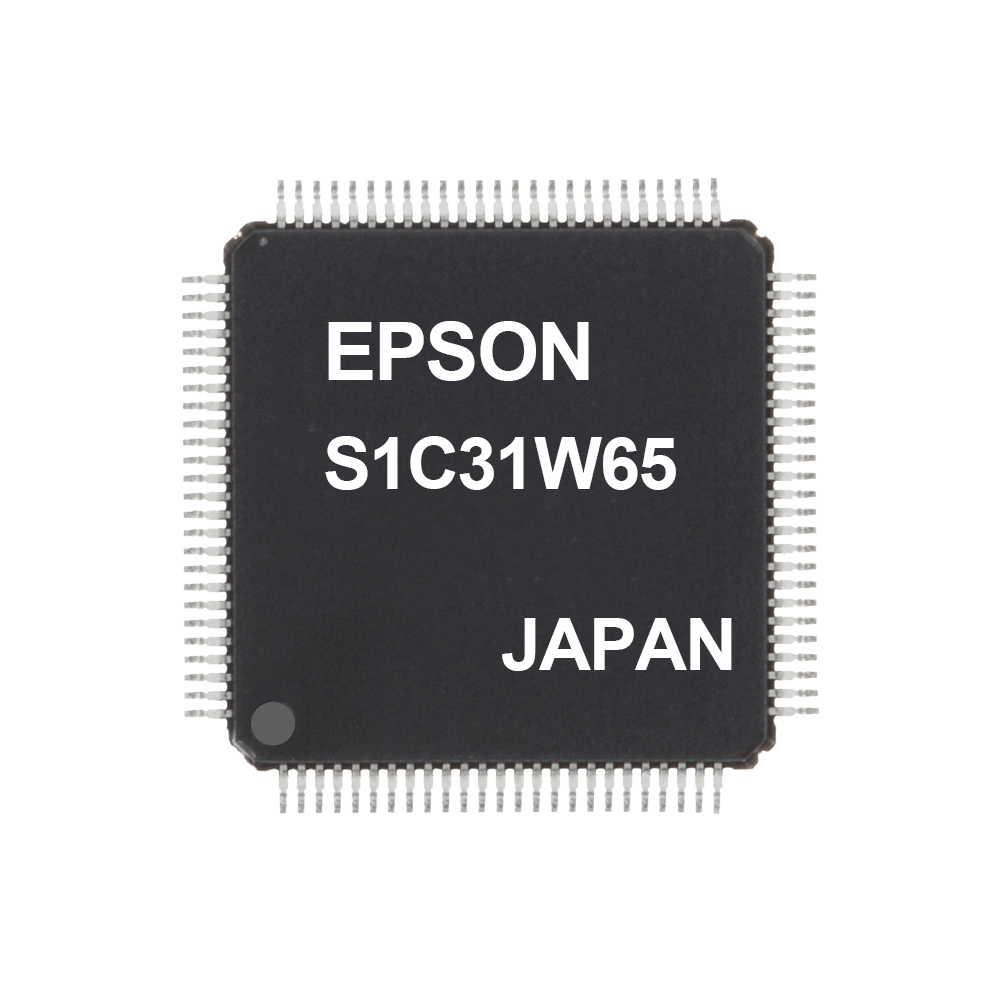Seiko Epson Corporation (TSE: 6724, “Epson”) has developed a new power-efficient flash microcontroller unit (MCU) with an ARM®Cortex®-M0+ processor. The S1C31W65 is the latest addition to the popular S1C31W series of single-chip MCUs with an integrated liquid crystal driver. It is the first multipurpose microcontroller to support a segment liquid crystal display driver. Epson plans to produce 200,000 units per month, high volume production began in August 2020. 
Industrial equipment and consumer electronics are increasingly IoT-enabled systems hosting a multitude of functions. They require high-performance processing while still maintaining low current consumption. To meet these market requirements, Epson has leveraged its low-leakage and low-current consumption technologies and used Arm®Cortex®-M0+ processors to expand and upgrade the S1C31 family of MCUs, which offer high performance yet consume minimal current.
The S1C31W65, operating at up to 33 MHz, delivers the highest performance in the S1C31 family. It consumes just 0.3 µA in sleep mode1 and operates at 130 µA/MHz.2 In addition, Epson leveraged its signature display driving technology to provide an LCD driver that can drive up to 416 segments. The bias power supply necessary for driving a liquid crystal panel can be generated by the internal power supply circuit3, so display quality is not affected by the remaining battery power. In addition, drive voltage is software adjusted. The MCU supports LCD contrast adjustment and liquid crystal panels with different voltages.
The S1C31W65 has a host of peripheral circuits, including various timers, a real-time clock (RTC), R/F converter4, A/D converter, and a temperature sensor. It supports operating temperatures up to 105℃ and operating voltages ranging between 1.8 V and 5.5 V, making it ideal for industrial equipment and for consumer electronics that require sensing.
Epson is committed to helping its customers improve the performance of their products with solutions that leverage Epson’s efficient, compact, and precision technologies.
A large number of built-in circuits that simultaneously help customers add more functions to their products while reducing the number of parts
Usable under a wide range of environmental conditions
| Product number | S1C31W65 |
| CPU core | ARM®Cortex® -M0+ 32-bit RISC processor |
| Flash memory | 128 Kbytes |
| RAM | 16 Kbytes |
| Operating voltage | 1.8 V to 5.5 V |
| Operating frequency | Max. 33 MHz (VD1 voltage mode: mode 0) Max. 2.1 MHz (VD1 voltage mode: mode 1) |
| LCD driver | Max. 416 dots (52 SEG x 5-8 COM) Max. 224 dots (56 SEG x 1-4 COM) |
| Serial interfaces | UART: 2 channels SPI: 2 channels I2C: 2 channels |
| R/F converter | CR oscillator with 24-bit counters and DC oscillation mode 1ch |
| A/D converter | 12-bit successive-approximation ADC External signal inputs: 7 max. Internal signal inputs: 1 Connect temperature sensor output |
| Temperature sensor / reference voltage generator circuit | Sensor output can be read by the A/D converter Reference voltage for A/D converter is selectable from 2.0 V, 2.5 V, VDD, and external input |
| Supply voltage detector | VDD or external voltage 32 levels (1.7 V to 5.0 V) |
| Timers | 16-bit timer: 8 channels 16-bit PWM timer: 3 channels Watchdog timer Real-time clock |
| I/O ports | I/O ports: Max. 63 bits. Output ports 1 bit. Universal port multiplexer: 32 bits |
| Current consumption (typical) | Sleep mode: 0.3 µA RTC mode: 2.1 µA Run mode: 195 µA/MHz (VD1 voltage mode: mode 0) 130 µA/MHz (VD1 voltage mode: mode 1) |
| Operating temperature | -40℃ to 105℃ |
| Shipping configuration | P-LQFP100-1212-0.40 (pin pitch: 0.4 mm) |
1 Equivalent to the Cortex®-M0+ processor’s deep sleep mode
2 When VD1 voltage mode is mode 1
3 The external input mode of the bias power supply is also supported.
4 RC oscillation type A/D converter. Resistance components are converted to frequency. Low-error, high-accuracy measurement is achieved by oscillating a reference resistance and sensor under identical conditions and finding the difference.
5 The time it takes for the CPU to read the vector table from the sleep state with a 32-MHz system clock
ARM and Cortex are registered trademarks of ARM Limited (or its subsidiaries) in the US and other countries. All rights reserved.
Please see the link below for further details about these products.
https://global.epson.com/products_and_drivers/semicon/products/micro_controller/armcore/
Check the following website to see the demonstration video.